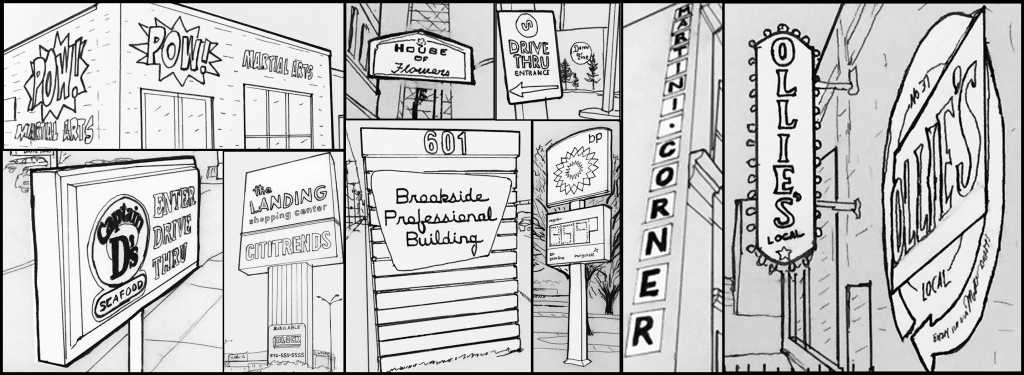
Signs serve two main purposes in cities; way-finding signs direct drivers and pedestrians through space, while commercial signs alert potential customers to business locations and retail opportunities. Each of these can appear in different forms depending on where they are located along the urban-rural transect.
I was interested in comparing the function of commercial signage in early suburbs, as found near 63rd Street & Troost Avenue, with older-growth corridors such as 31st Street at Union Hill.
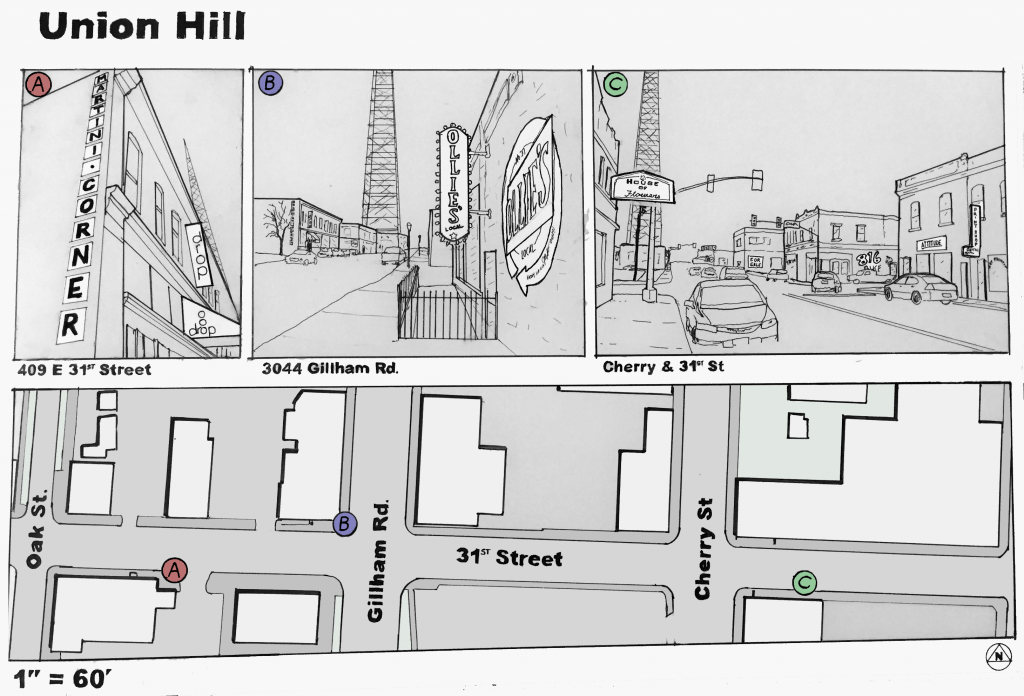
At Union Hill, as in many urban contexts, signs are found attached to the buildings that house the businesses which they are advertising. Some extend out from the building facade, such as the House of Flowers sign; while others are painted directly onto walls, such as the Martini Corner sign. The same form works for a variety of businesses, as seen above with flower shops, print shops, and restaurants all having similar sign forms.
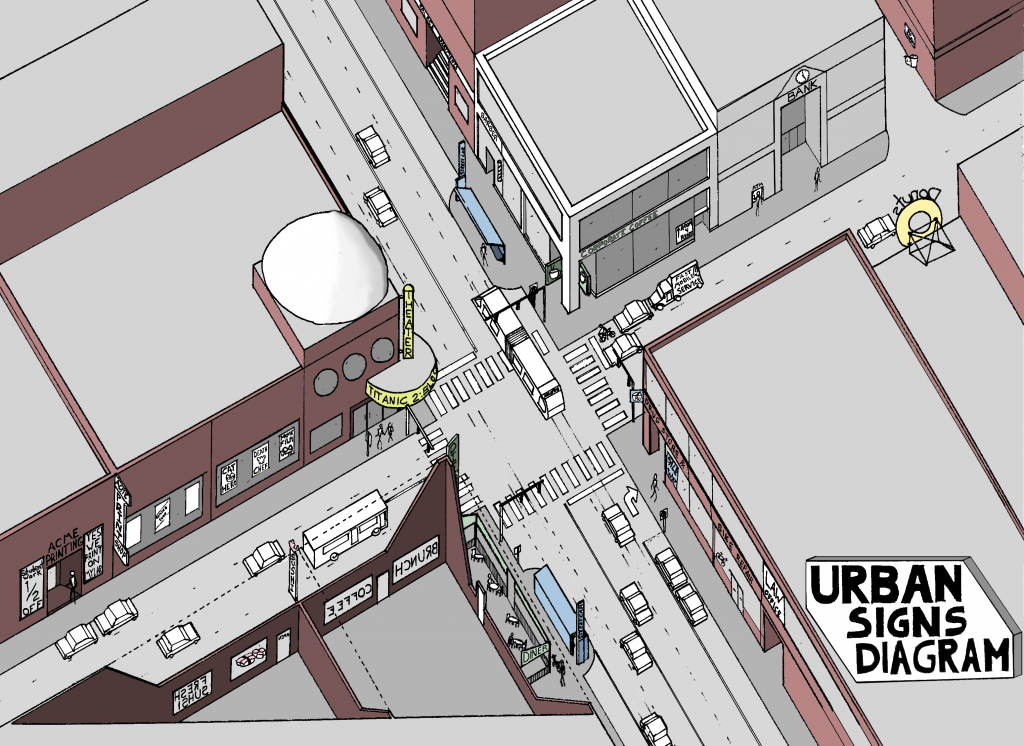
One may also find non-permanent signage in these contexts. These may be sandwich-boards in the street-furniture zone of the sidewalk or banners and chalk-painting across large windows. The most dense of urban areas may also have mobile signs that travel the area on modified box trucks.
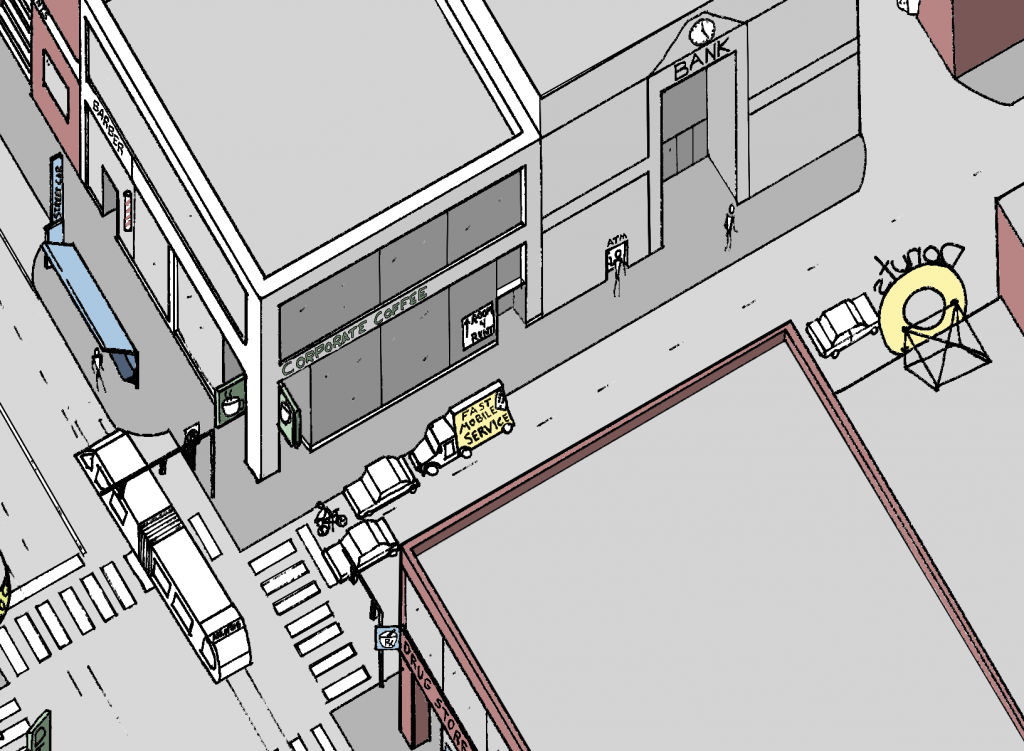
The signs which extend out from the building create a rhythm as one looks down the street and are scaled to the pedestrian eye. Generally a pedestrian will be able to see and comprehend a sign in this context from a block in either direction, a distance which many would consider easily walk-able.
In many cases, urban signs are most easily read by those travelling at slower speeds, in particular cyclists and pedestrians. Slow-moving automobile traffic may be able to comprehend the signs, but drivers travelling faster than 30 mph will have more difficulty taking note of these advertisements.
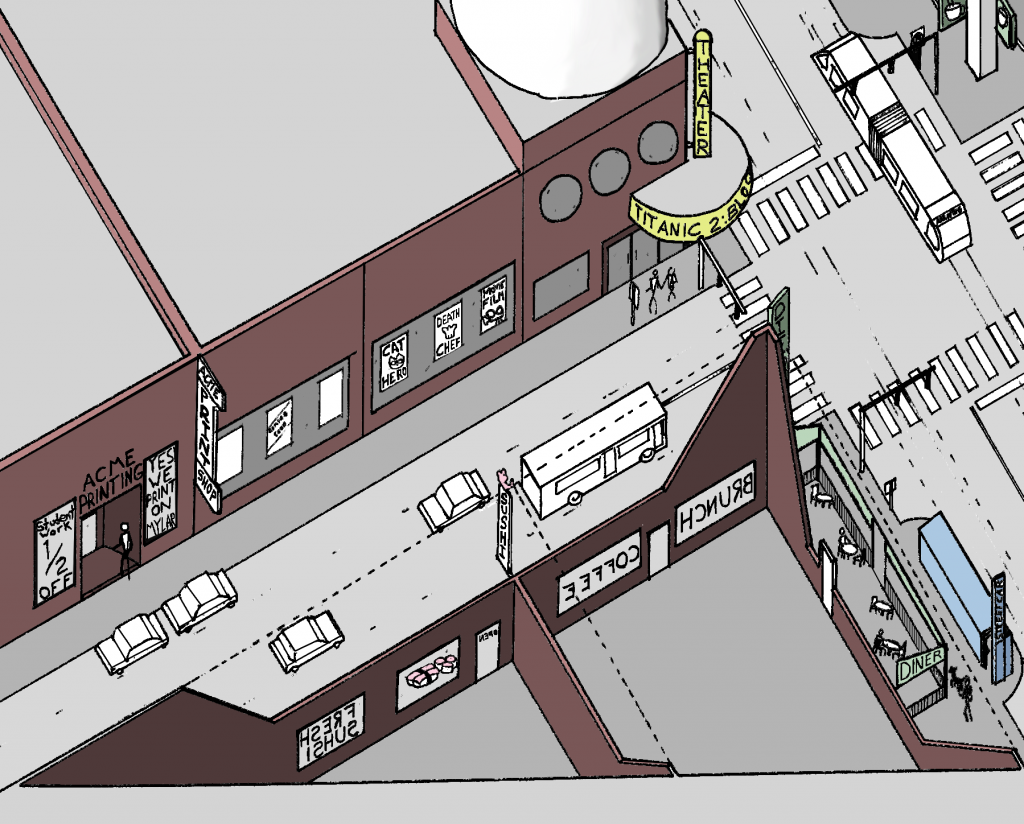
Early suburban areas feature a unique mix of signage. The area of West 63rd Street is an example of an interesting transitional period in the form of signs.
Along the 63rd Street corridor many signs retain a pedestrian scale in size but their placement, relative to the buildings they reference, is beginning to show an auto-era character.
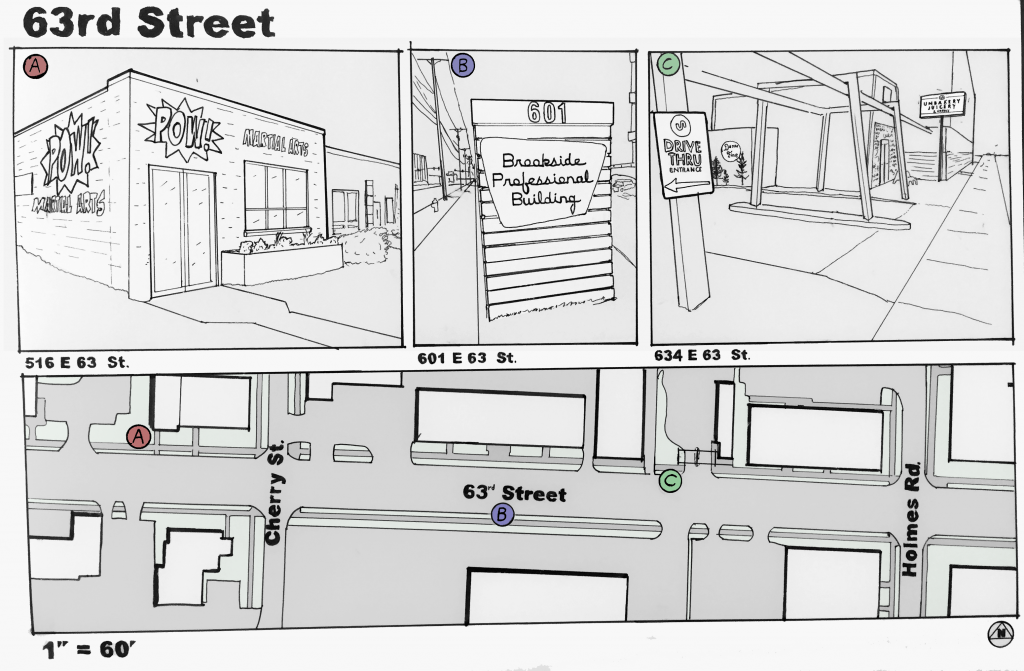
The signs noted above exemplify this mix. The POW! Martial Arts studio sign is painted directly onto the building’s facade, similar to the Ollie’s sign at Union Hill. The Brookside Professional Building sign is beginning to be out-of-scale with the pedestrian experience. It is taller than the average person and the prominent display of the street number seems designed to attract the attention of a driver who is looking for this address specifically. However, removed from its wooden stand in the median, the metal plate of the sign would not be out of place attached to the side of a building. The signs for 634 E. 63rd St. feature the hallmarks of auto-era signage. One sign in the set directs cars towards a drive-thru, while the other is a large rectangle atop a tall pole. The height and size of this sign is easily read by passing motorists but it towers over pedestrians.
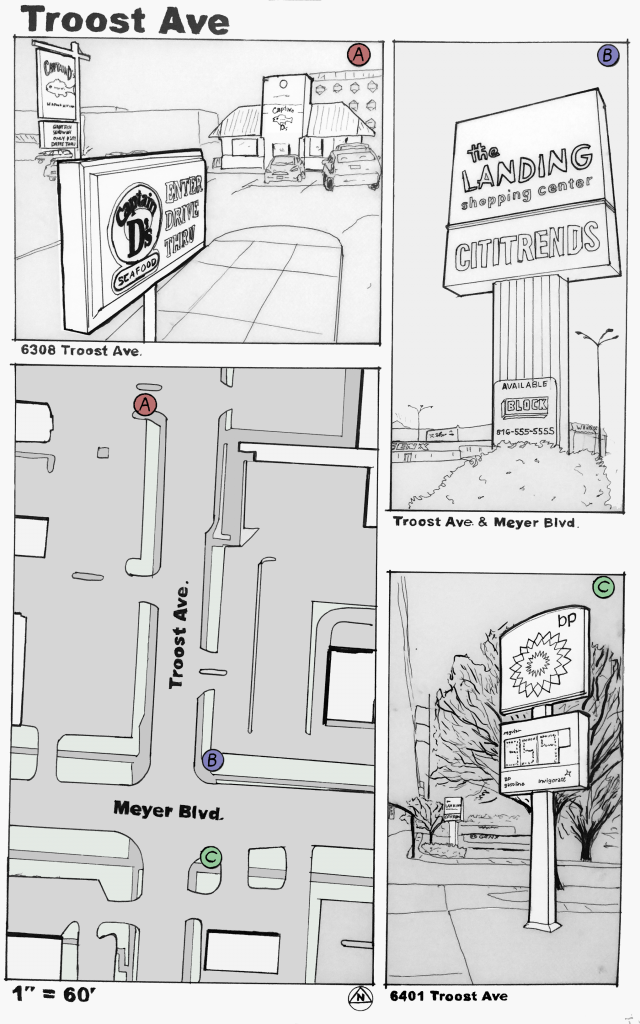
Interestingly, just a few blocks away, at Troost Ave. and Meyer Blvd., the form of signage changes dramatically. Here, almost all signs are directly scaled to automobile traffic and ignore the pedestrian experience.
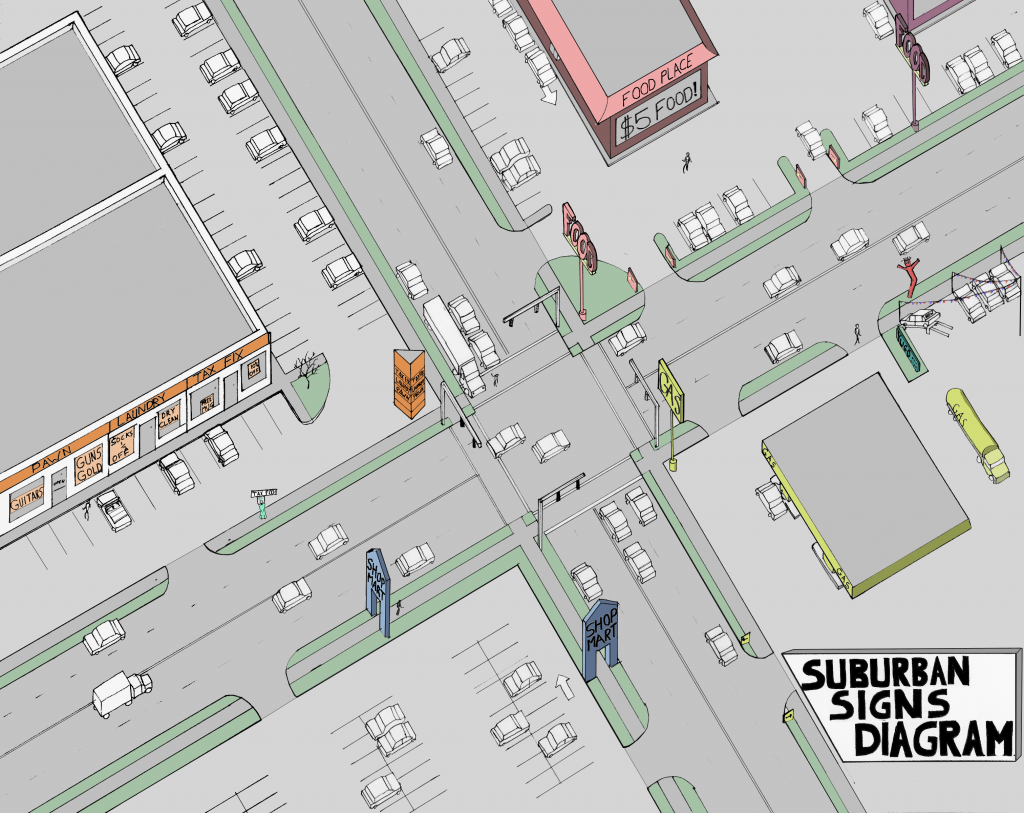
Pole-signs dominate many suburban landscapes with their height and garish colors. Motorists are surely enticed by these behemoths.
Signs in an auto-centric area often take the form of large symbols atop tall poles. Frequently these signs are a great distance from the buildings which they reference. These are often paired with smaller signs at the entrance to parking areas. The tall signs grab the attention of passing motorists through their large symbol and often garish coloring. Once a motorist has been attracted by the pole sign, the matching way-finding signs direct the driver from the street into a parking lot. This form is very often associated with fast-food restaurants, gas stations, and other franchised brands with nation-wide reputations. The fact that these signs appear in the same form around the country contributes to the suburban reputation for bland sameness.
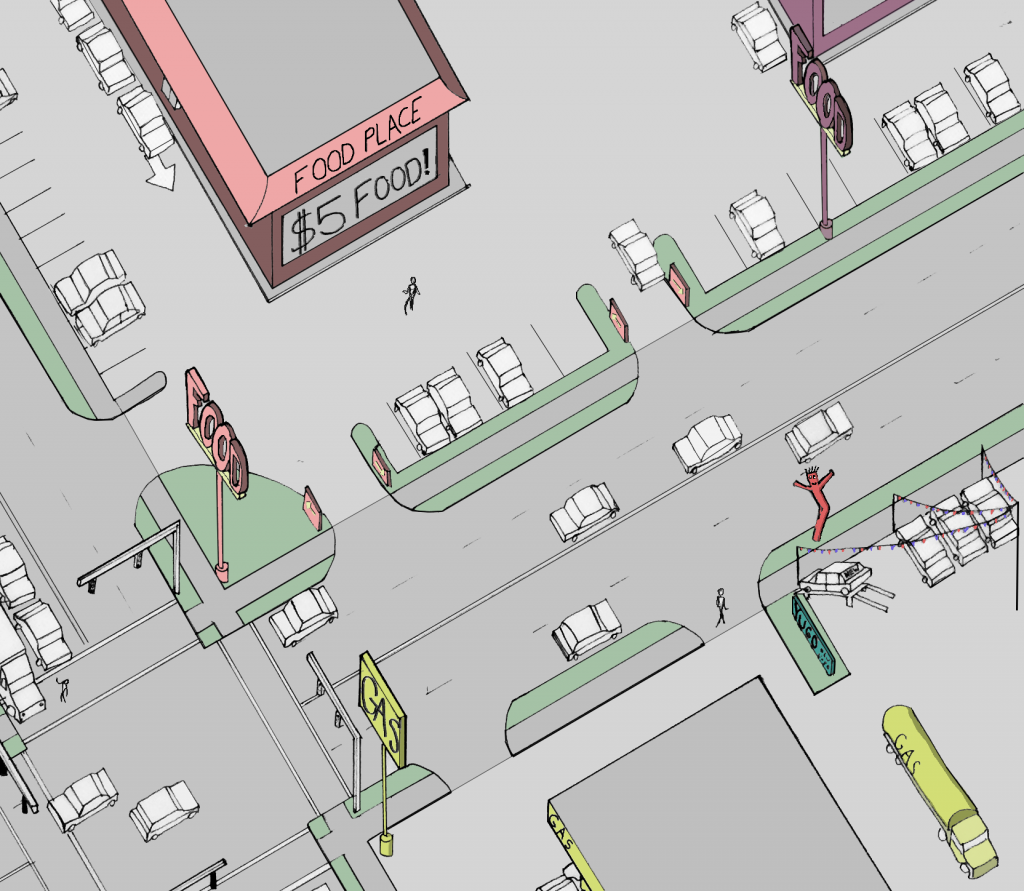
In an area where the rhythm of tall pole-signs has become commonplace; some businesses have resorted to outlandish variations in signage. Car sales lots and tax-assistance businesses have become notorious for their attempts to grab the attention of speeding motorists.
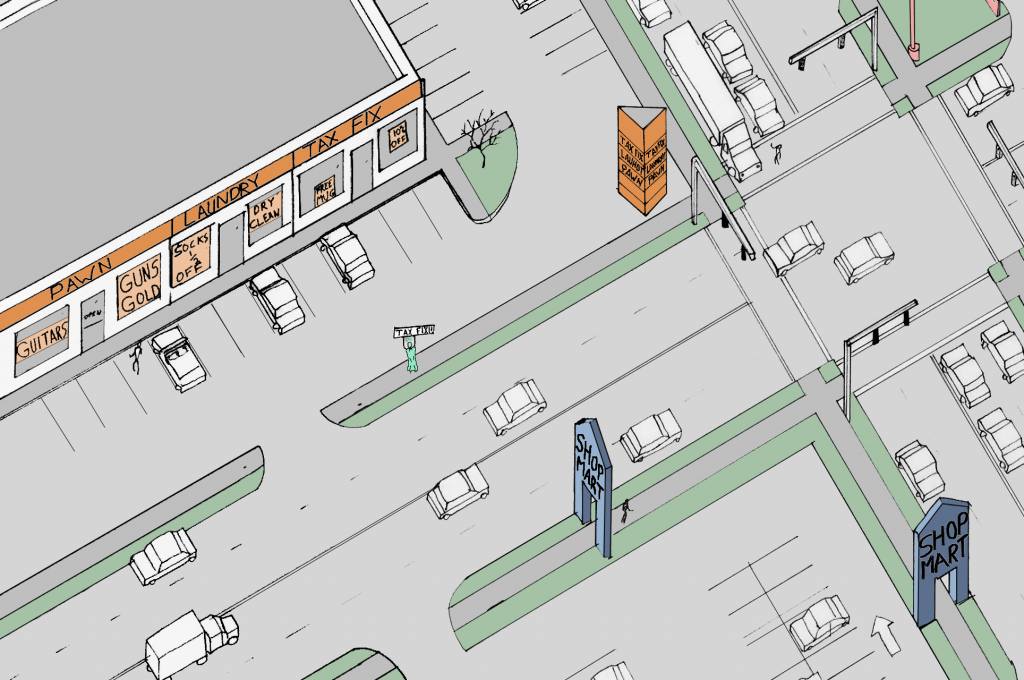
The overall effect of the signage in the early-suburb transect is one of overwhelming size and color. The pedestrian experienced is ignored in favor of attracting those travelling by car. The proliferation of national chains, and their associated sign-patterns, give suburban areas an interchangeability that harm any place-making efforts.